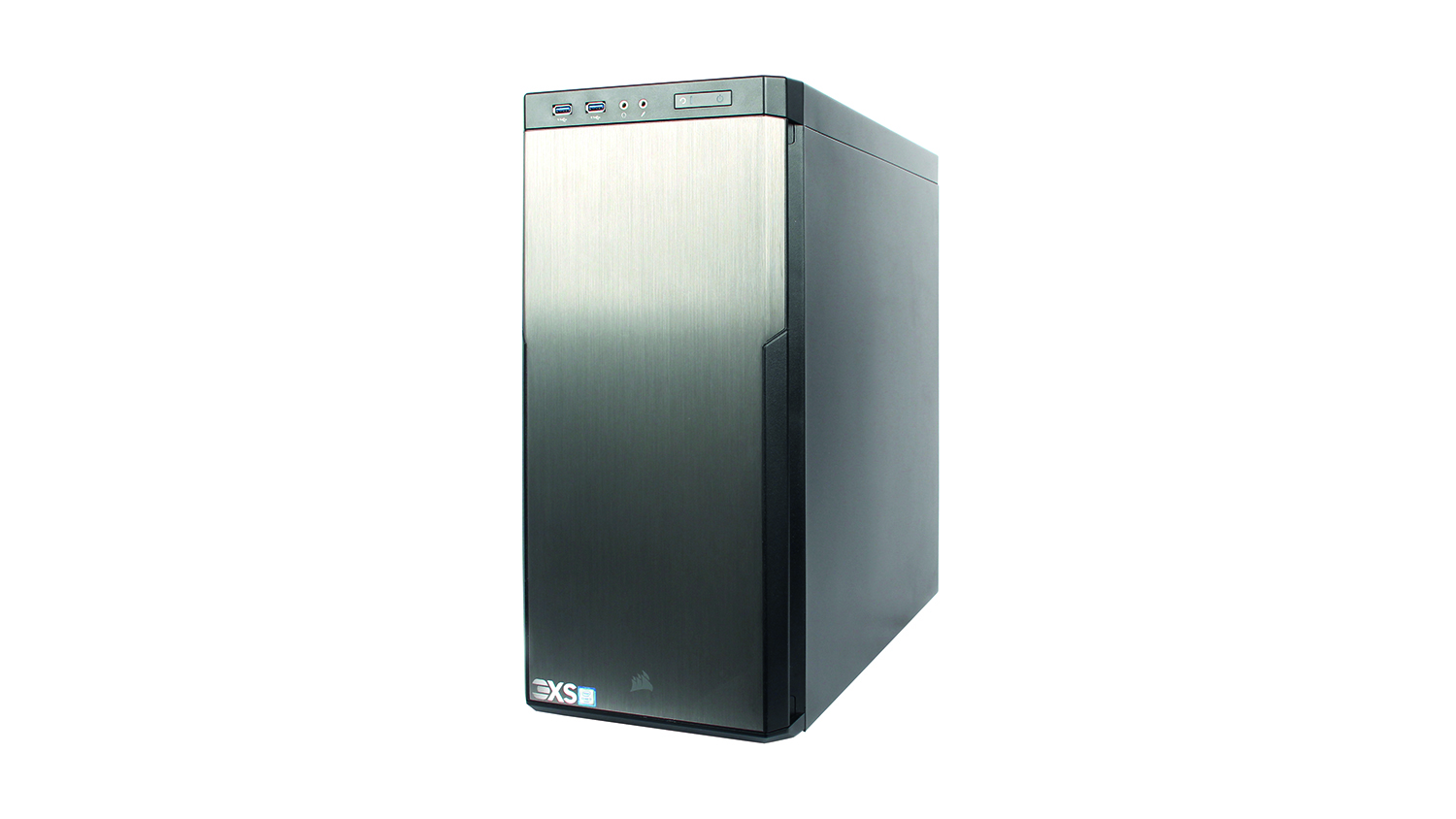Scan 3XS Classic 3D review
The very competitive price and powerful components make the Classic 3D one of our top choices


Considering that the Classic 3D is anywhere between £450 and £950 cheaper than its competitors, this workstation gives you a lot of state-of-the art content creation kit for the money.
-
+
Good value for money; Capable performance; Strong specs; Quiet cooling;
-
-
SSD isn't as quick as rivals

At first glance, the Scan 3XS Classic 3D isn't particularly unusual. Yet another black full tower chassis, yet another Core i7, yet another Nvidia card. But it manages to edge ahead of its competitors thanks to generous pricing, especially when compared to this month's similarly specified alternatives.
Scan hasn't been as aggressive as some when it comes to frequency-enhancing its processor. The Intel Core i7-6950X is set to 4GHz rather than its nominal 3GHz, while others opted for 4.2GHz. But that's still a good boost, and with ten cores on hand there's plenty of processing power available. The processor isn't cooled by a water system, but by a Noctua NH-U14S sink and fan, which is nearly inaudible and very good at keeping the CPU temperature under control. The increased processor speed is backed by the full three years of the manufacturer's warranty, of which the first year is on-site.
The hefty Core i7 is partnered by 64GB of 2,666MHz DDR4 SDRAM. Scan has supplied this as eight 8GB DIMMs, so unfortunately you can't upgrade without swapping out RAM. However, 64GB should be adequate for most needs for the lifetime of this system; note the Asus X99-A II motherboard has a 128GB maximum, should you need it.
The 3XS Classic 3D joins the crowd by offering Nvidia's brand new Quadro P5000. This is now the ultra-high-end card of choice, since the P6000 above it is so ludicrously expensive. With 2,560 CUDA cores and 16GB of enhanced GDDR5X memory, this is a truly capable professional 3D accelerator for modelling or, should you wish to venture into such a field, GPU-powered rendering.
Primary storage is the one small chink in Scan's armour. Intel's 600p Series is the first TLC 3D NAND-based SSD to hit the market, and it brings the prices of PCI Express NVMe M.2 SSDs down close to that of the formerly cheaper SATA variety. But while it's faster than SATA, it's not as quick as rivals with Samsung SSDs, with reading at 1.13GB/sec and writing at 468MB/sec, with the latter only a couple of times faster than a SATA hard disk.
Scan also supplies only 256GB of SSD storage, but it's joined by 2TB of Seagate Barracuda 7200.14 conventional 7,200rpm hard disk storage. With reading at 206MB/sec and writing at 198MB/sec, this is a quick hard disk. There's a 24x Asus DVD writer to round off the specification, but no handy memory card reader.
Performance is as expected for the hardware. The Maxon Cinebench R15 rendering score of 2,080 is around 5% behind the Core i7 6950X systems with more aggressive clocks, with the OpenGL score of 180 also a little down on the competition. However, the SPECviewperf 12.1 scores are just as capable, with a very good result of 146 in 3ds Max 05.
The OctaneBench result of 139 is the best of the Quadro P5000 bunch, showing good GPU rendering abilities, although the LuxMark test wouldn't run on this system for some reason. In the IT Pro benchmarks, the second best image-editing result and third best video-encoding score show that this system is a capable all-rounder. Whether you're modelling or rendering 3D, image editing, or video editing, the Scan has what it takes.
The Scan 3XS Classic 3D isn't quite perfect. Its primary SSD isn't the quickest. But apart from that it can go toe-to-toe with most contenders, with the exception of the monstrous Lenovo ThinkStation P910 and its two CPUs. Considering that the Classic 3D is anywhere between 450 and 950 cheaper than its competitors, this workstation gives you a lot of state-of-the art content creation kit for the money.
This review originally appeared in PC Pro issue 270.
Verdict
Considering that the Classic 3D is anywhere between £450 and £950 cheaper than its competitors, this workstation gives you a lot of state-of-the art content creation kit for the money.
Get the ITPro daily newsletter
Sign up today and you will receive a free copy of our Future Focus 2025 report - the leading guidance on AI, cybersecurity and other IT challenges as per 700+ senior executives
Dr James Morris has worked as a technology journalist for over 25 years, including spending nine years on the staff of market-leading computer magazine PC Pro, the last five of which were as the publication’s editor. He specialises in enterprise-grade software and hardware, with a particular focus on content creation. He launched a pioneering video channel for HEXUS.net in 2006 and ran the video reviews channel for TrustedReviews.com for four years. He also runs a successful online digital content and commercial video production company, t-zero communications Ltd.
Dr Morris is a prolific technology writer and contributes commercial content for major IT brands including AMD, BlackBerry, Dell, Cognizant, HP, and IBM. He published a book on artificial intelligence, Can Computers Create Art? in 2009. He is also an academic, and is currently Pathway Director of the MA, Interactive Journalism at City, University of London.
Previously, he was course leader for the BA in Web Media Production at Ravensbourne University. He has a PhD in Philosophy, Art and Social Thought from the European Graduate School in Switzerland, a Master's in Media Arts from the New School in New York, USA, and a Bachelor's in Social Anthropology from the London School of Economics.
Dr. Morris can be found on Twitter at @Cyberwest, or emailed at j@tzero.co.uk
-
 Westcon-Comstor and Vectra AI launch brace of new channel initiatives
Westcon-Comstor and Vectra AI launch brace of new channel initiativesNews Westcon-Comstor and Vectra AI have announced the launch of two new channel growth initiatives focused on the managed security service provider (MSSP) space and AWS Marketplace.
By Daniel Todd Published
-
 Third time lucky? Microsoft finally begins roll-out of controversial Recall feature
Third time lucky? Microsoft finally begins roll-out of controversial Recall featureNews The Windows Recall feature has been plagued by setbacks and backlash from security professionals
By Emma Woollacott Published
-
 The UK government wants quantum technology out of the lab and in the hands of enterprises
The UK government wants quantum technology out of the lab and in the hands of enterprisesNews The UK government has unveiled plans to invest £121 million in quantum computing projects in an effort to drive real-world applications and adoption rates.
By Emma Woollacott Published